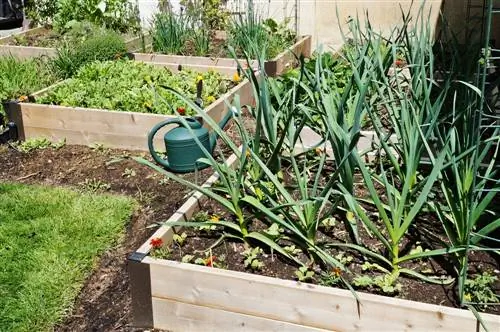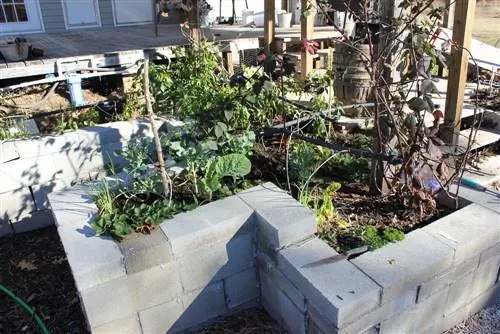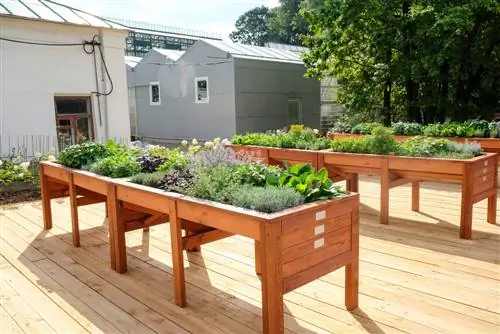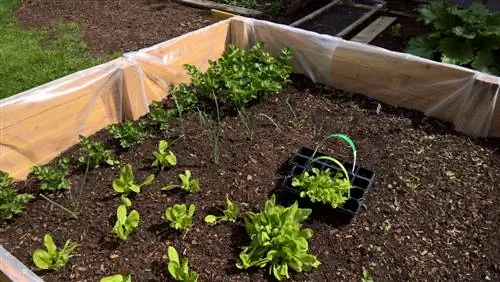- Author admin [email protected].
- Public 2023-12-16 16:46.
- Last modified 2025-01-23 11:21.
A raised bed is usually built so that you can work comfortably standing or with a standing aid. However, some people need a significantly lower raised bed, for example because they are in a wheelchair or are short.
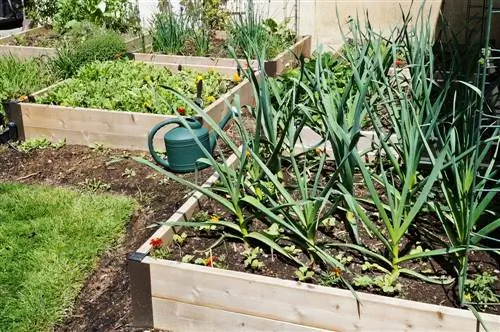
When does a low raised bed make sense?
A low raised bed is useful for people in wheelchairs, with limited height or for tall plant crops. The height of such beds is usually between 50 and 65 cm, which allows you to work while sitting and makes the garden usable even in difficult soil conditions.
Height of the raised bed depends on your height
People have very different body measurements, from toddlers around one meter tall to very tall men and women. Therefore, the height of a raised bed should ideally be planned so that the person who works on it most often can work comfortably. The rule of thumb is that the upper edge of the raised bed is always at the height of the iliac crest, i.e. around 85 to 100 centimeters.
Keep the future in mind when planning your raised bed
When it comes to raised beds, keep in mind that - depending on how durable and stable you build your bed - they will probably become smaller and less able to stand as the years go by. In this case, there are constructions that can be easily adjusted in height and those that can be expanded or expanded as desired.even dismantle it and have it reassembled somewhere else.
In which cases low raised beds can make sense
In some cases, however, raised beds are not built at the usual standing height, but rather significantly lower. There are various reasons for this. Lower beds usually have a height of between 50 and 65 centimeters, so that the necessary work can be done comfortably while sitting - for example from a seat embedded in the edge of the bed construction.
Low raised beds as a garden replacement
Some areas are absolutely not suitable for growing vegetables and/or ornamental areas - be it because the soil is too heavy and clayey or unsuitable for other reasons (e.g. too moist) or because your garden has a steep slope. In this case, low raised beds can still make gardening possible, for example by creating them as compost beds, moving the location of the bed every one to two years (and refilling it in the process), and thereby gradually improving your garden with self-produced humus.
Low raised beds for tall crops
Low raised beds are also very suitable for very tall, but high-maintenance plant crops such as tomatoes, which you can water and harvest while standing, protecting your back. All you do is prepare the floor while sitting. Table beds are also usually significantly lower than the classic beds, with a height of between around 60 and 70 centimeters. They are particularly suitable for wheelchair users.
Tip
Raised beds for children should also be built lower according to the child's height. Individual shapes such as mini raised beds in fruit crates are also very suitable here.
Additional information on ergonomic gardening is compiled for you in this article.

